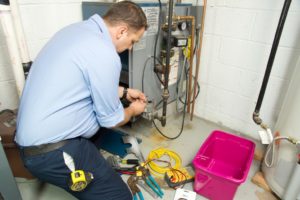Water heaters, boilers, and gas furnaces in the past only had one type of ignition system: the standing pilot ignition system. Nowadays, electronic ignition models are the leading option for gas furnaces among property owners. Unlike standing pilot ignitions, electronic ignitions can keep your flame lit without having the pilot light on throughout. That said, they are more energy-efficient and reliable.
Unfortunately, they are prone to malfunction, like all other parts of your furnace. It is important to hire a licensed gas fireplace repair professional in Salt Lake City to assess the issue and handle it efficiently. An electronic ignition system is positioned near your furnace’s gas valve, which is directly controlled by the ignition module or circuit board.
Here are the categories of electronic ignitions found on gas furnaces:
Direct Spark Ignition
This type contains no pilot light; instead, it has a flame sensor that detects a flame on the opening of your gas valve. If there is no flame detected, the gas valve closes for a few seconds and tries to detect the flame for up to three times. If there is still no spark sensed, the valve will lockout for not less than an hour. The lock-out mechanism is a measure to avert dangerous accumulation of gas in your indoors, which might explode in the presence of a spark.
Intermittent Pilot Ignition
This contains a pilot light that lights when you need heat as indicated by your thermostat. The pilot valve is located in the gas valve and starts a spark that ignites the pilot assembly’s head and, consequently, the pilot light. Upon detection of a flame, the circuit board will open the main gas valve and light the burner until the desired heat level is achieved. An intermittent pilot ignition has the same safety measures as direct spark ignition.
Hot Surface Ignition
 This ignition contains an igniter, which is typically an element made of silicon carbon. This will glow red when a current is applied from the furnace’s circuit board. In most hot surface ignitions, a flame sensor near the burner will detect the glow and keep the burners lit when the voltage flow is interrupted. In a few systems, the igniter will switch on the pilot light, which in turn lights your main burners.
This ignition contains an igniter, which is typically an element made of silicon carbon. This will glow red when a current is applied from the furnace’s circuit board. In most hot surface ignitions, a flame sensor near the burner will detect the glow and keep the burners lit when the voltage flow is interrupted. In a few systems, the igniter will switch on the pilot light, which in turn lights your main burners.
Mercury Bulb Ignition
This system uses a spark ignition for lighting the pilot light and a mercury switch to confirm the flame after which the gas valve will open. After opening the gas valve, the pilot light switches on the main furnace burners. Most of the new furnace units, however, do not use mercury bulb ignitions because of their hazardous environmental impact.
The above ignition systems will work in different operation sequences, depending on your ignition controller. In the presence of a safety issue, the operation sequence will be broken by a lockout. The repair technician you hire will generally determine the cause of the interruption in the operation sequence. Once this is rectified, your electronic ignition’s functioning will be restored. That said, it is important to hire a reliable professional to handle your furnace repair needs.




